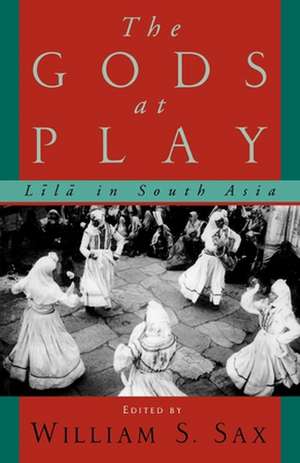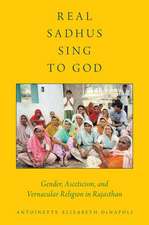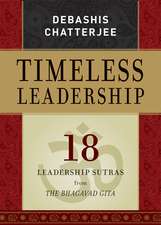The Gods at Play: Lila in South Asia
Editat de William S. Saxen Limba Engleză Paperback – 3 mai 1995
The idea of God's playfulness has been elaborated in Hinduism more, perhaps, than any other religion, providing one of the most distinctive and charming aspects of Indian religious life. Lila or divine play can refer to many things: to God's playful creation of the world and to religious dramas or plays, as well as to various motifs in Hindu art. But despite the importance of lila in the cultural history of South Asia, few comprehensive studies of it are available, partly because scholars have tended to emphasize only one dimension of lila--either the theological or the performative--at the expense of the other. The Gods at Play fills this gap by bringing together scholarly essays on all aspects of this important Hindu idea, providing students with a broader understanding of popular Hindu culture and religion.
Preț: 501.95 lei
Preț vechi: 651.89 lei
-23% Nou
Puncte Express: 753
Preț estimativ în valută:
96.06€ • 99.92$ • 79.30£
96.06€ • 99.92$ • 79.30£
Carte tipărită la comandă
Livrare economică 14-28 aprilie
Preluare comenzi: 021 569.72.76
Specificații
ISBN-13: 9780195091021
ISBN-10: 0195091027
Pagini: 248
Dimensiuni: 139 x 210 x 14 mm
Greutate: 0.29 kg
Editura: Oxford University Press
Colecția OUP USA
Locul publicării:New York, United States
ISBN-10: 0195091027
Pagini: 248
Dimensiuni: 139 x 210 x 14 mm
Greutate: 0.29 kg
Editura: Oxford University Press
Colecția OUP USA
Locul publicării:New York, United States
Descriere
BLThe first comprehensive and interdisciplinary examination of an important component of South Asian cultural historyThis is a collection of mostly unpublished essays on `Lila', a Hindu concept meaning `divine play' that is at once a theological, dramaturgical, and aesthetic category.
Recenzii
This volume is bound to interest all those who go beyond seeing Gods as serious and distant actors in the affairs of human beings. Also, this will be of special interest to students of comparative religions, especially those whose interests are focused on the entwining freatures of religion and popular culture.











